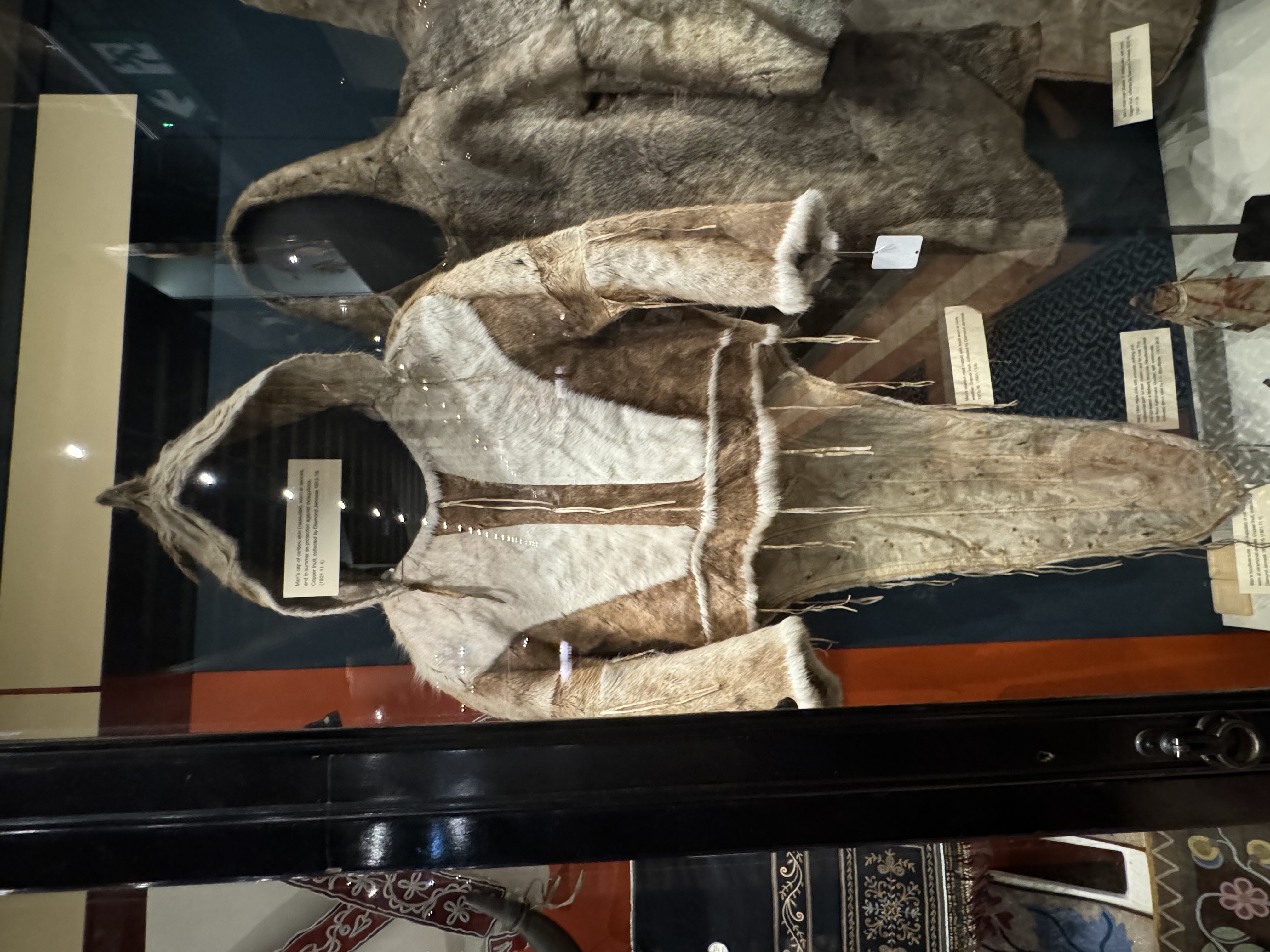9. Pitt rivers Museum
02/11/2023


There is a work made by flax. The knots on it combine into a patern. It is creative. Compared to nomal pattern, it is 3D and gives more possibility to tactile impression. The ceramic pot was covered by beads. It makes me think that I can also apply this method to my works. Not only the ceramic but also wood or metal works. The combination of these things gives me a sense of novel. The beads combination looks like textile from a distance. It is psychedelic.


Eskimos made amazing raincoats from seal intestines. We now basically use plastic materials to make raincoats.
 The trousers of an Indian boy are covered with embroidery with ethnic characteristics and have tassels on the edges. These ethnic features make this pair of leather pants different, so background research is important when designing something.
The trousers of an Indian boy are covered with embroidery with ethnic characteristics and have tassels on the edges. These ethnic features make this pair of leather pants different, so background research is important when designing something.There are also helmets made of pufferfish skin, which reminds me of a case I saw before where orange peels were used to make lamps. Perhaps many biological materials in nature can be made into such functional things after drying and shaping.
![]()


Eskimo clothes.



